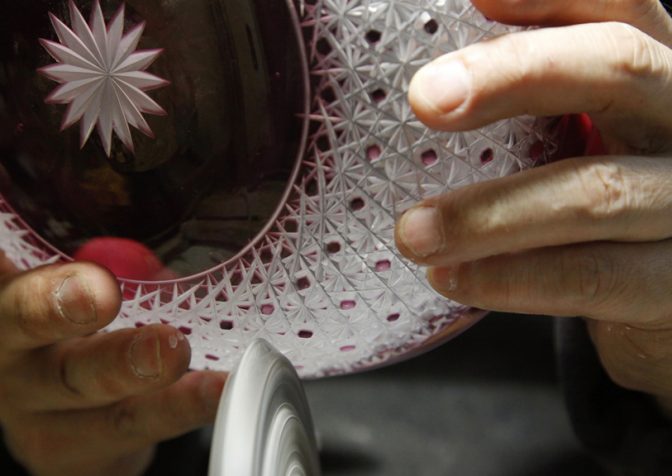Freely draw out the attraction of the raw material,
The skill of an Edo Kiriko craftsman shines bright
Parent and Child, Generation after Generation
The rainy season of June is over and it is already summer. Glasswork brings us a respite from the summer heat. On this occasion, we interviewed craftsmen of Edo Kiriko in the field of glass. Our first interviewee is Yoshiro Kobayashi. He is the Board Chairman of Tokyo Cut Glass Industry Cooperative. This is an association for Edo Kiriko.
Mr. Kobayashi is a third generation Edo Kiriko craftsman. His grandfather was the first. “It was when I was in the second grade of high school that I decided I was going to continue the family business. From when I was little, I spent my time around craftsmen in our house and so I think it was only natural that I developed these feelings.”
In the Kobayashi household there were many one-off works and a great number of highly skilled and highly regarded craftsmen. “Rather than my father, I learned about this job from watching veteran craftsmen at work. Following their examples and observing their works is kind of like having a feeling of stealing. The first ten years I really tried my hardest.”
In order to come of age as an Edo Kiriko craftsman at that time, I was told that it takes seven to eight years; from starting with cleaning the workplace, managing the sand and tools to be used and working at the job of polishing, to the task of rough grinding. Mr. Kobayashi told us, “Nowadays, diamond wheels and the like have appeared on the scene and with advances in tools, it has become much faster to acquire the technical skills required. However, I think we must not lose what is kind of like the “soul of the craftsman” which is a perfectionist when it comes to craftsmanship. On the other hand, besides this, from the expanding possibilities of Kiriko, I think it is important that craftsmen, now and in the future, use even more flexible concepts to consider a variety of angles.” He tells us that he also teaches as a special lecturer at schools and other places and that he has great hopes about the younger generation.
In fact, the fourth generation Kobayashi Edo Kiriko craftsman is already in the middle of learning the trade. This is his eldest son, Kouhei. After graduating university this year, he will take up the path of Kiriko.
“There are countless motivations why I wanted to follow this path, but I think chief among them is the feeling that without even really being aware of it, Edo Kiriko is something that I have become very familiar and enthusiastic about. I too played around in the work site from when I was very young and so Kiriko was very close to me. In fact, at present I think trying to come to grips with it as an actual job is something that is really difficult for me. I want to catch up with my father as soon as possible, but he seems to be a long way in the distance.”
It seems as if the craftsman gene has truly been handed down from father to son.
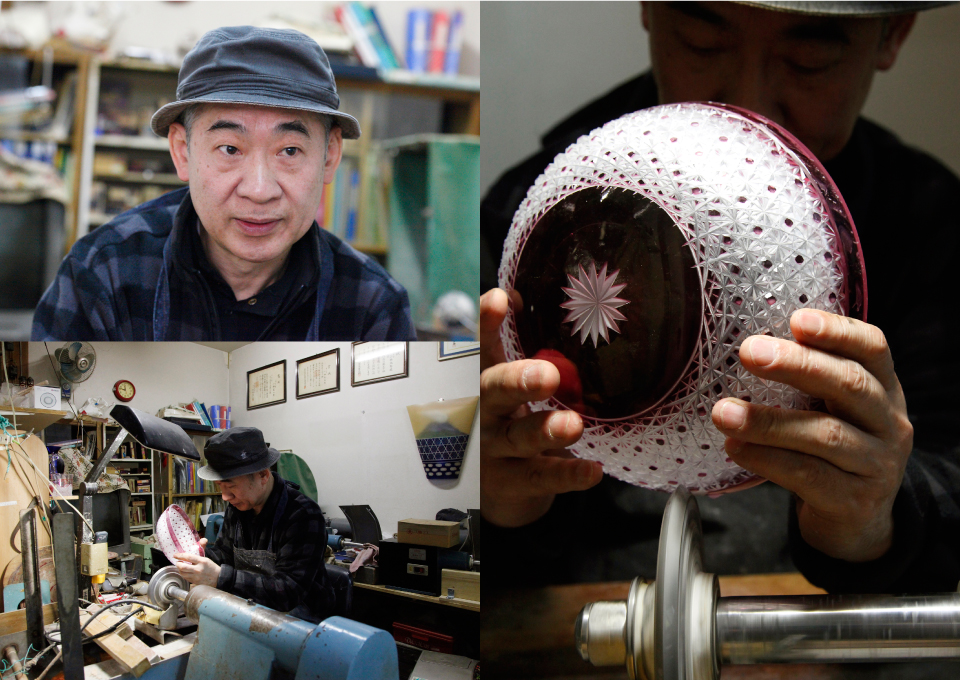
The works of Mr. Kobayashi have also been adopted as presents to foreign dignitaries.
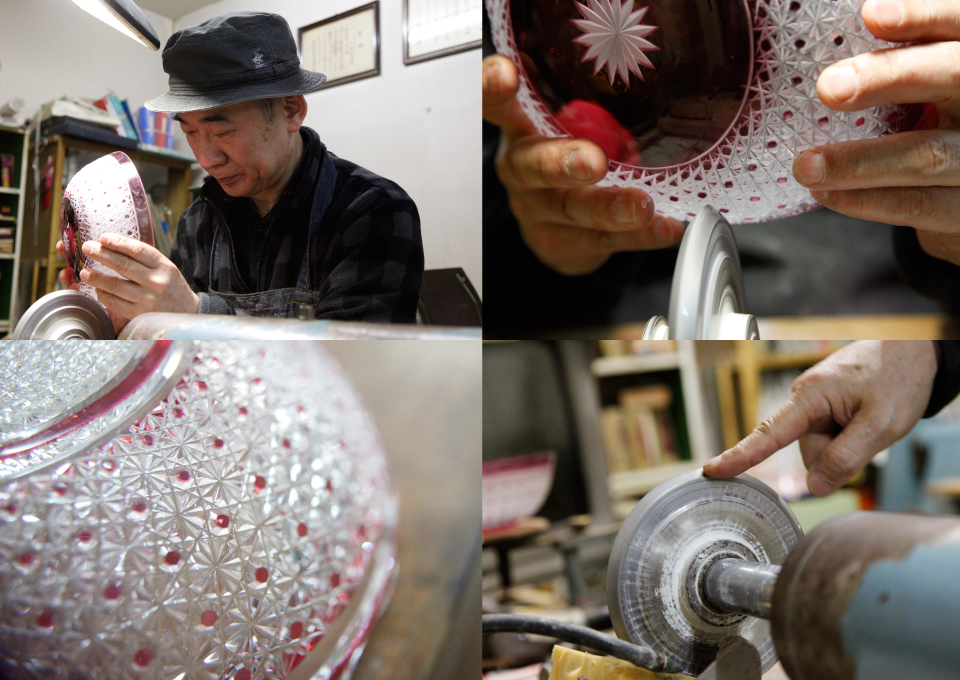
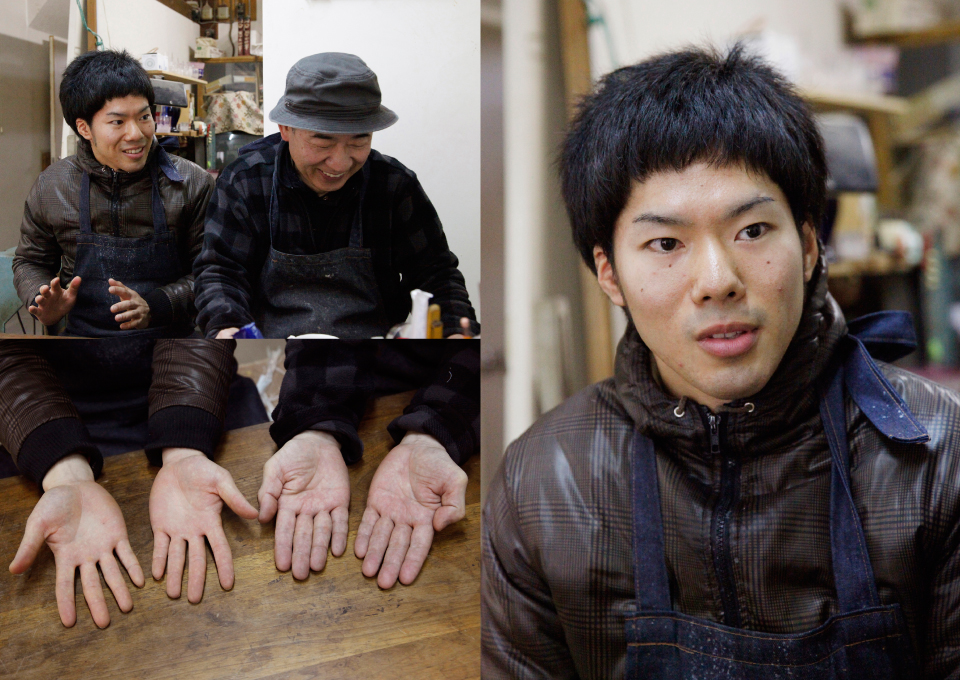
Contact information: Edo Kiriko Kobayashi Telephone: 03-3631-6457
I once went a different way,
But of course, it was glass that I truly loved.
“When I was a child, I received an allowance from my aunt and she told me ‘Buy something you like with it.'” At that time the thing I bought was a small glass tumbler. It seemed that everyone expected me to buy some candy or a toy and so they had a surprised look on their faces when they found out what I had done with the money. Even today I still have that tumbler.” These are the words of Hidenori Takano of Takano Glass Crafts.
When he was a junior high school student he liked arts and crafts. His family also had jobs related to electrical equipment and so he entered into technical college. At college he learned about electrical technology and after graduation he found employment in a company related to semiconductors. “In fact, although I had found a job, I soon quit. While helping my father with his job I was continuously thinking about ‘What kind of job should I spend the rest of my life doing?'” said Mr. Takano. An acquaintance of his introduced him to Hideo Kobayashi, the father of Yoshiro Kobayashi who we had the pleasure of meeting already in this book. Through Mr. Kobayashi he joined Takizawa Glass Crafts.
“Although I had liked glass, I had absolutely no knowledge or experience of it at that time.” However, learning was not a problem for me. I looked at the pieces and methods of my master and others and I used this as a reference for the things that I didn’t understand or the things that I was not good at” mentioned Mr. Takano. Gradually, he developed a desire to tackle not just the jobs that he had been given, but various other tasks as well, and so he started taking on the challenge of producing his own pieces outside of the hours of his job.
“Originally, Kiriko was the technique of engraving a pattern on a vessel whose shape had already been completed. However, when I went in pursuit of making my own pieces, I wanted to learn from the point where these shapes were made. Therefore, I would go to the place of an acquaintance who was a glassblowing craftsman and I would go to see a flat work craftsman who grinds things level. I would also go to meet other craftsmen who were making the same kind of Kiriko. My master is a very broadminded person and so he would let me come and go as I pleased. I am very grateful to him for that,” says Mr. Takano.
In his sixth year after joining Takizawa Glass Crafts, he publically went independent. Currently, he is following the unique system of Kiriko craftsmen called wakukari (space borrowing), whereby he is borrowing one area of Takizawa Glass Crafts and working there in his own name.
“I have seen that some people who started in this industry at the same time as me have already quit. It is definitely important to take the attitude that once you have chosen to do this job for life then you should stick to it no matter what. I think that being able to become someone that can repay the kindness that my master showed to me when I was starting out is what will make me come of age.”
Upon gaining his independence he was able to use the comparatively generous severance payment from his master to inherit the equipment he uses. “I am able to make use of my knowledge of electricity that I had learned in my previous career to tune up the equipment” spoke Mr. Takano while laughing.
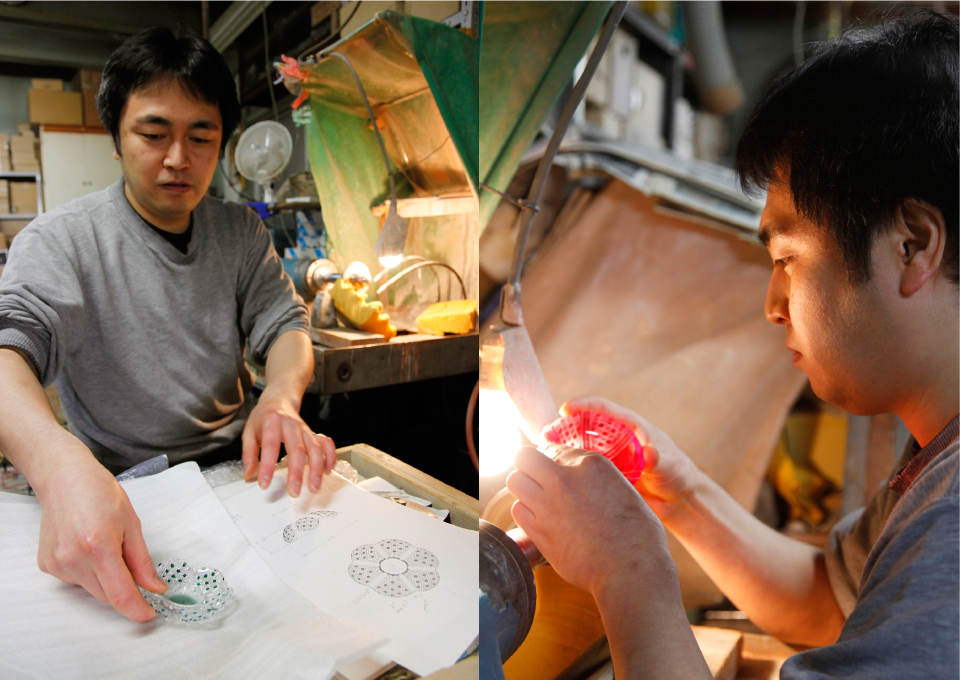
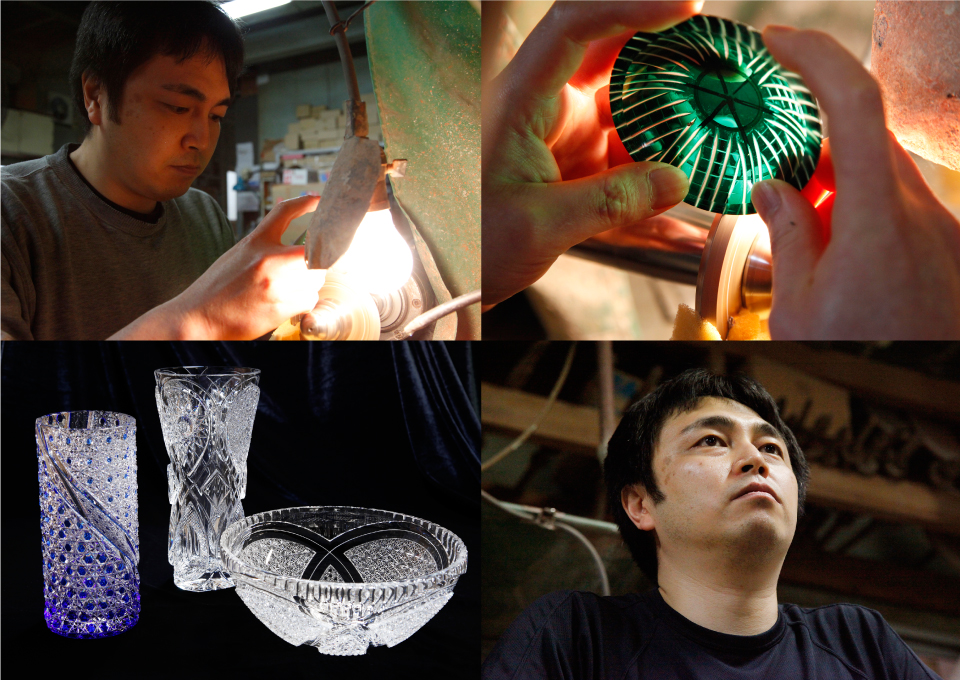

The experience and techniques of craftsmen develop the young senses of those that take up craftsmanship
“However people look at me, I don’t know , but I cannot see myself as having completely come of age.” These are the words of Ryuuzou Mita, the Factory Manager at Shimizu Glass. Although he says this, Mr. Mita is a person with 60 years’ experience as a craftsman. “When I was 15 years old, an older craftsman encouraged me to take up this line of work. At first, my master and my older colleagues were very strict in their guidance and there were times when I was reduced to tears. Kiriko uses water, so at that time in winter when there was no air conditioning, it was really tough. Kiriko is all handmade, piece by piece, and so even when making the same object it is possible that the season, the daily weather, whether it is made in the morning or whether it is made in the afternoon and occasionally even the craftsman’s physical condition can all cause a difference in the end product. This is the case even with experience, but as a craftsman I also wonder whether it is right to make a completely identical end product.” These are the words of a man who strictly scrutinizes himself.
At Shimizu Glass under Mr. Mita, expert craftsmen in the making are being developed. Of these protégés, we spoke to Yayoi Aoyama who has two years’ experience as a craftsman and Naoko Nagashima with one year’s experience.
Both Ms. Aoyama and Ms. Nagashima used the Support Program for
Apprentices of Traditional Crafts offered by the local government of Katsushika-ku* to join Shimizu Glass. Ms. Aoyama studied product design at school. Before coming here she held a job planning and designing curtains and the like. “When working at that position I had to meet the fashions of that year or that season and the product cycle was very short. I wanted to work with products that are more deliberate and which will be used for a long time and so I jumped into this line of work.”
On the other hand, Ms. Nagashima has come to this job from the service sector. “I worked in construction in summer and I really liked it. I thought that one day I would like to do a job connected with craftsmanship. The company that I worked at previously was a really big firm and so I didn’t really fit in there, but now I think that, of course, here is somewhere that I am much better suited to.”
Both women had no knowledge or experience when it came to glass, but they did possess an interest in the raw material of glass. Now, they have started, step by step, on the road to becoming craftsmen. The factory manager Mr. Mita watches over these two with warm eyes. “I hope that the sense young people possess and the sense of design will be cherished. Of course, the traditional techniques, the choice of tools and the way to use them and other skills must take a long time to learn, but I hope they aim at an even newer craftsmanship. I too would like to challenge myself to never give up and set myself the task of making even better craftsmanship.”
※Please confirm it about the system of Katsushika-ku on a homepage.
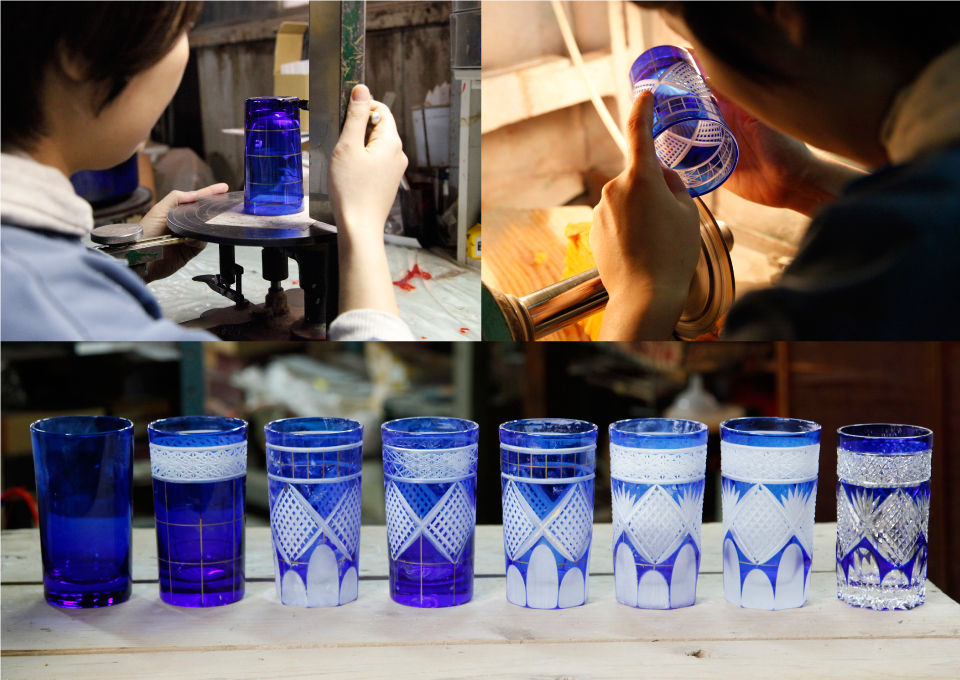
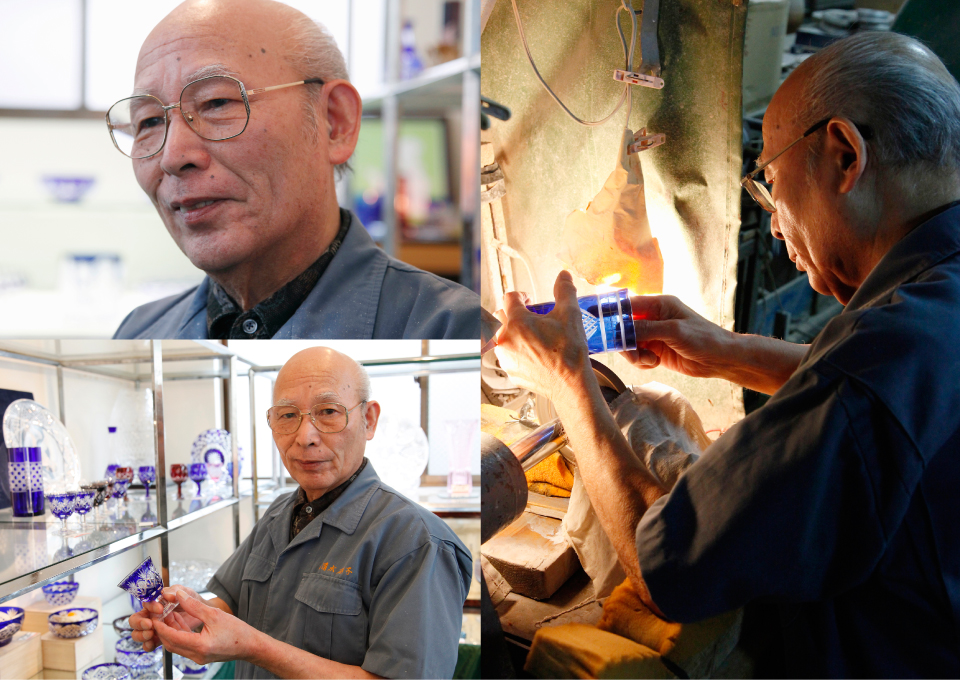
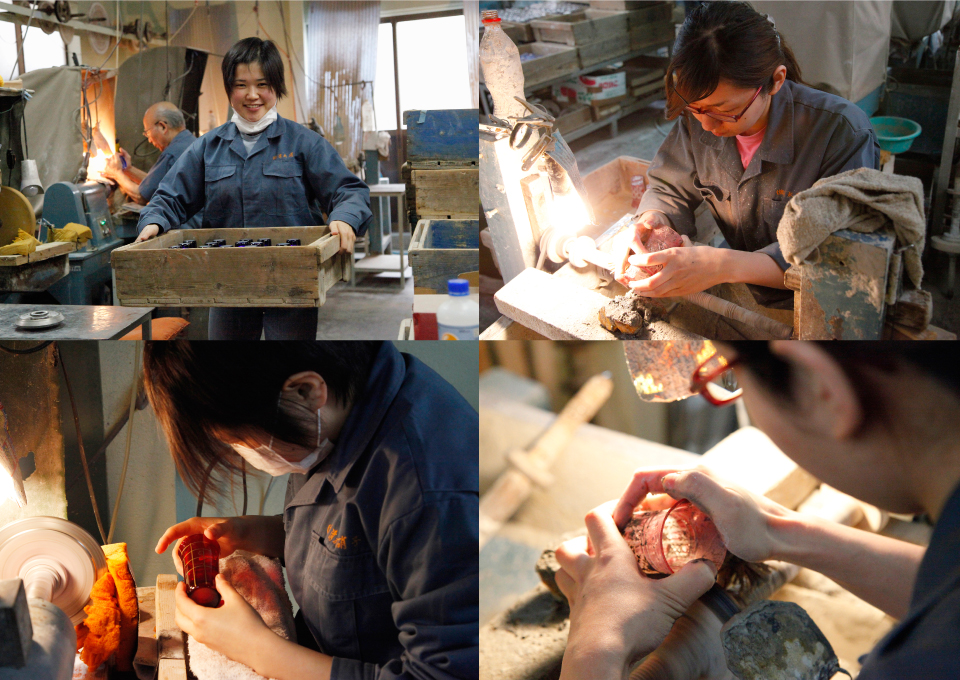
Contact information: Shimizu Glass Corporation, Telephone: 03-3631-6457
Edo-Kiriko(Please click the icon of subtitles.)

